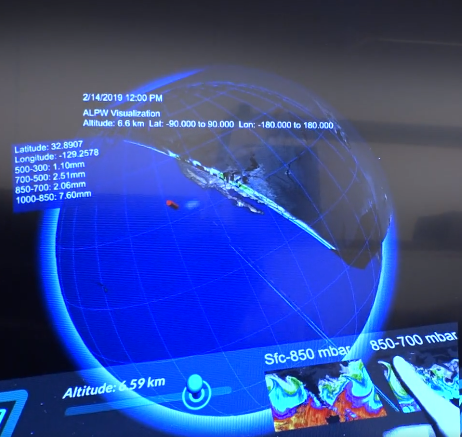
ESSIC/CISESS Visiting Assistant Research Scientists Mason Quick and Scott Rudlosky and CISESS Faculty Specialist Eric Lee recently participated in a video interview with reporters from Voice of America to highlight their cutting-edge virtual reality software that uses 3-D mapping to improve weather forecasting.
“What we’re doing with the virtual reality is bringing it in and displaying the data in its native three-dimensional context, and we’re hoping that will lead to better interpretation of the data,” says Quick in the interview.
This software is used to analyze NOAA operational and experimental datasets produced by satellite, airborne, and ground based observational instrument systems. This work is conducted in collaboration between CISESS and the Maryland Blended Reality Center at the University of Maryland.
Rudlosky is a Physical Scientist with the Satellite Climate Studies Branch of NOAA/NESDIS/STAR. His research focuses satellite lightning products and how they compare to ground measurements.
Quick conducts research in atmospheric physics with a focus on atmospheric electricity using a variety of remote sensing tools and data products. He has worked on numerous field campaigns to deploy electric field change meters, lightning mapping arrays, high speed video cameras, and multi-band radiometers.
Lee is a Faculty Specialist at the University of Maryland Institute for Advanced Computer Studies (UMIACS). He is working on three-dimensional visualization and analysis techniques for meteorological datasets in virtual reality.
To access the video, click here.





